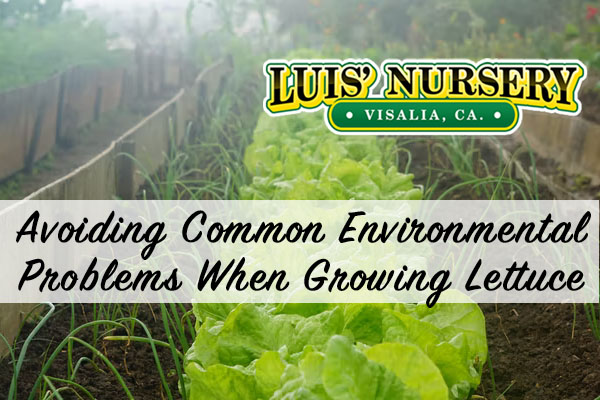We just shared how to successfully grow your own salad garden. You know how to plant your lettuce and how to reseed and have a continual harvest as well as which fixings to grow alongside your lettuce to create the most mouth-watering salads. Lettuce is relatively easy to grow, but there are some environmental problems when growing lettuce that can wreck your harvest and waste your lettuce. We have a few tips and tricks to help maximize your harvest and deal with problems.
Common environmental issues lettuce face
Environmental issues can be prevented with careful planning and preparation. Here are a few to remember:
- You’re not seeing any heads forming – You are expecting to see growth, but you’re not seeing heads forming. What could be the problem? Before you plant your seeds it’s important to make sure that your soil has enough nutrients. If you’re seeing signs of poor growth, you can use a liquid fertilizer or plant food to help the plant recover.
- Another issue could be that your lettuce is grown too closely together. If you have too many plants drawing the nutrients from the soil or they are too close together there won’t be enough room for them to grow successfully.
- Did you plant the right seeds for the right season? Young lettuce needs to avoid the hottest part of the day, so the wisest course is to plant in late spring or summer, and avoid the lettuce being exposed to the hottest season when it’s too young to handle it. If you can avoid forcing your lettuce to struggle when it’s younger, it’ll set it up for success.
- Your lettuce is bolting – Did your lettuce bolt to seed? Why did it happen? Usually this is because of heat stress. The plant knows that it’s struggling and produces seed in order to ensure reproduction. To reduce stress, you should water regularly around the base of the lettuce and make sure it has plenty of shade during the hottest parts of the day.
- Your lettuce isn’t germinating – Lettuce germination requires the right temperature. This circles back to planting the right variety for the right season and area. Lettuce, much like people, has favorite temperatures. Some like it hot and some like it cooler. 70 degrees Fahrenheit is the best temperature for germination. If you get above 80 you will likely not have success.
- Your lettuce is leggy – In wine, we like our legs, but in our lettuce – not so much. What exactly is leggy lettuce? It’s when young lettuce has a long stem, but few leaves. If your lettuce is still young and in pots it may be that they aren’t getting sufficient light and are trying to reach the sun. This is an easy fix – move them into the sun. If your garden lettuce is having this issue, it may be that they are too hot, or have too much shade. Take note of your planting location and move them next season.
There are many other issues that can impact your lettuce, but these few environmental problems when growing lettuce can be easily prevented and remedied. We wish you successful planting!

